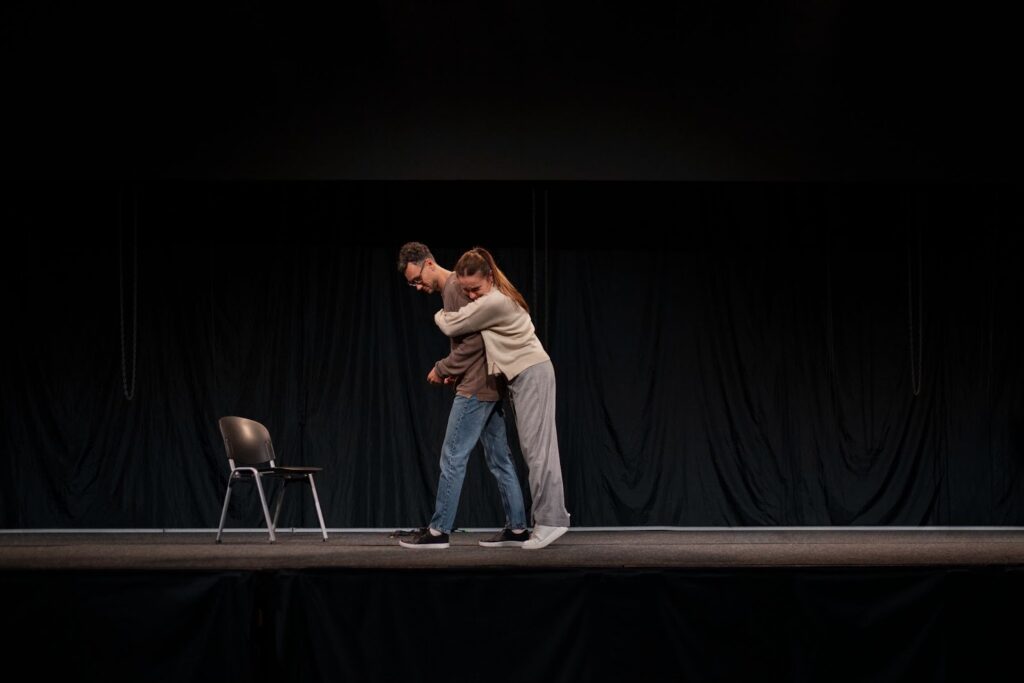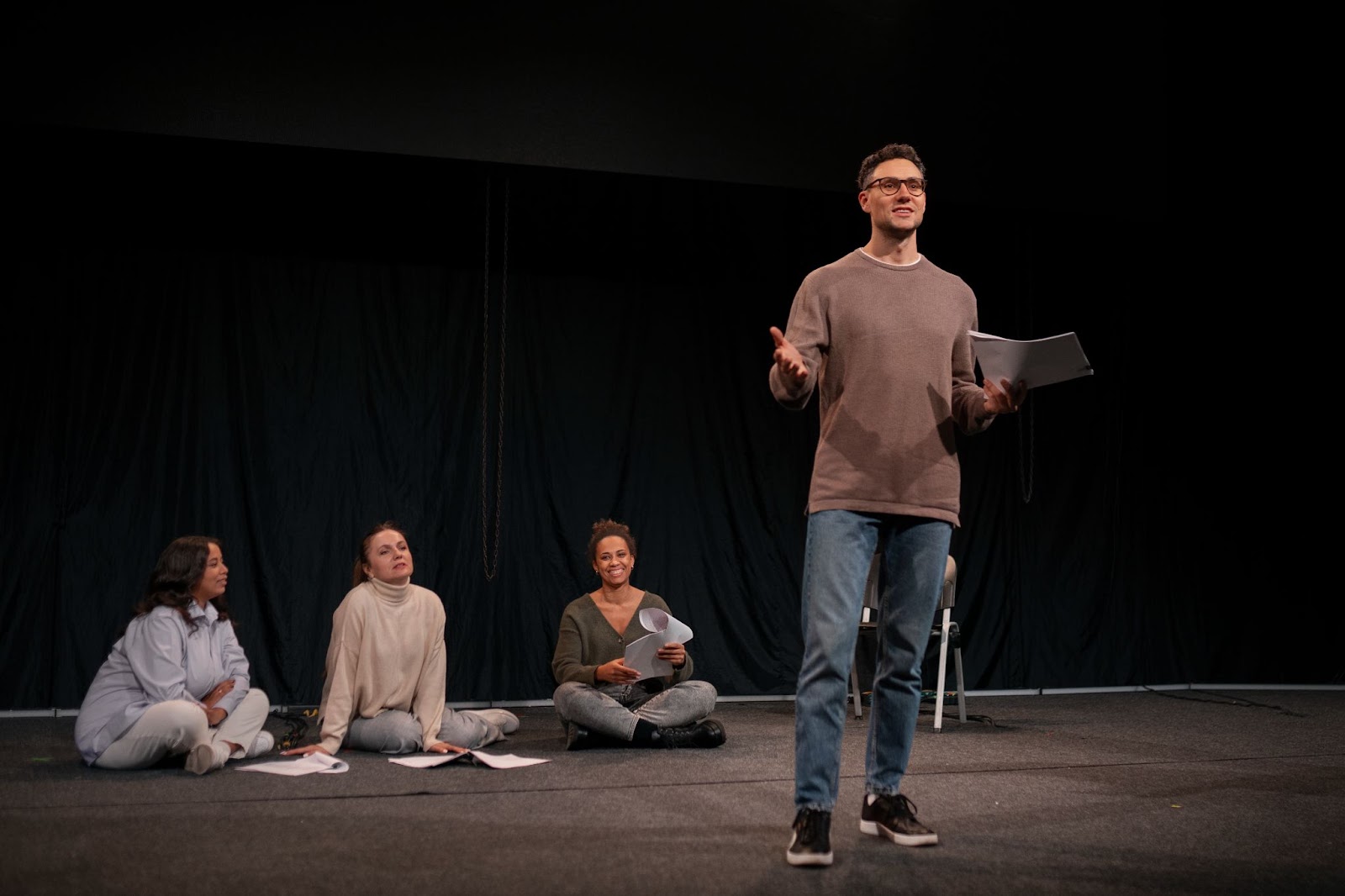Individuals with experience in or around theatrical performances are aware of the superstitious tendencies prevalent among theater practitioners. Every theater group adheres to its unique set of customs and rituals, although certain beliefs are commonly shared throughout the theatrical community. This inclination towards superstitions might stem from the numerous potential mishaps that can occur during a production. Despite most superstitions lacking concrete evidence, it is deemed preferable to err on the side of caution.
Numerous widely recognized superstitions have various speculative origins, making them challenging to validate. Presented below are popular interpretations for several familiar customs and practices.
Delving Into ‘Break a Leg!’ – Unwrapping the Intrigue of Theatre Superstitions
The theatrical jargon “break a leg” seems perplexing and counterintuitive to those outside the sphere of drama, often leading to misinterpretations. Surprisingly, this phrase represents a creative manifestation of theatre superstitions, not an ill-wishing sentiment.
The roots of this expression, predominantly used to wish actors, can be traced to the early 20th century. However, multiple theories exist regarding its origin and interpretation. They range from simple humor to elaborate traditions steeped in theatre’s rich history, making this subject intriguing and worthy of exploration.
- A Hope for Success: One popular interpretation, often found circulating internet memes, suggests that wishing someone “break a leg” is expressing hope they secure a spot in the cast – a successful audition;
- Reverse Psychology: Some actors believe that directly wishing luck could potentially offend the gods of fortune. Therefore, they use a reverse psychology approach, theoretically asking for an adverse outcome to achieve a positive result instead;
- Dropping of the Curtain Legs: Another theory directs attention towards the “legs” of the curtains on a proscenium stage. In this context, a ‘leg’ refers to the sides of curtains framing the stage. An extended standing ovation and multiple curtain calls would necessitate raising and lowering these curtain legs numerous times. An overload of such adoration could metaphorically cause a ‘break in the leg’;
- Claiming Pay and Recognition: During the flourishing era of vaudeville at the turn of the 20th century, actors were paid only when they ‘broke the leg’ of the curtain, i.e., they performed onstage. Thus, ‘breaking a leg’ signified achieving success and recognition.
This fascinating play on words, steeped in history and tradition, is a testament to the unique and compelling world of stage acting. ‘Breaking a leg’ is much more than a simple wish; it’s an embodiment of actors’ hopes, resilience, and the beautiful superstition that adds a touch of magic to the theatrical world.
Ghost Lights: The Illuminating Custom of Theater
The world of theater is rife with stories of ghostly encounters. The echo of footsteps in an empty auditorium, a fleeting shadow across the stage, or mysterious movements behind the curtains – all are blamed on the theater’s resident spirits. These captivating tales, passed down through generations, are part of theater’s rich folklore.
For instance, the opulent Radio City Music Hall allegedly harbors the ghost of its maker, S.L. “Roxy” Rothafel. His spirit, they say, continues to roam the property, ever vigilant of his creation.
Equally intriguing is the New Amsterdam Theatre’s tale. The legend goes that the theater is haunted by Olive Thomas, a former Ziegfeld Follies actress from the early 20th century. Her portraits adorn the backstage area, receiving daily greetings – “Good Morning” at the start and a “Good Night” at the end – from every staff member. This ritualistic greeting is said to please Olive’s spirit, ensuring peace at work.
Interestingly, stories like these resonate in theaters worldwide, leading to an intriguing tradition – the “Ghost Light.” This lone light left turned on, even in an empty theater, serves multiple purposes:
- Safety Measure: A ghost light mitigates any potential accidents that may occur due to the theatre’s obscurity. It averts falls from the stage, collisions with props, or other mishaps, making it integral for safety;
- Prevention Against Gas Explosions: During the 19th century, when theatres relied on gas for lighting, keeping a light on was a practical measure. It helped prevent gas pressure from building up, averting catastrophic explosions;
- Pacifying the Spirits: Although the practical reasons hold weight, the ghost light is traditionally considered a tool to pacify resident spirits. It’s a gesture of goodwill, a beacon in the darkness, signifying that they are acknowledged and respected.
Hence, the ghost light is more than a mere bulb on stage; it’s a symbol of the theatre’s rich history and an enduring tribute to those who once graced its stage. After all, in a realm where magic, illusion, and storytelling reign supreme, superstitions and ghost tales are just part of the script!
The Mysterious Saga of ‘The Scottish Play’
Shakespeare’s tales have been both revered and feared over the centuries, blending the thrill of the narrative with a pinch of the supernatural. Among his plays, one stands out, shrouded in centuries-old superstition that continues to instill both awe and dread in theatre circles worldwide. This classic tragedy, dealing with witches, royalty, ambition, and guilt, goes by a more circumspect alias in the theatre world- “The Scottish Play.”
Directly uttering the real title, Macbeth, within a theatre’s precincts is considered a harbinger of disaster, calling forth malevolent forces that could spell doom for the production. This belief is so deeply ingrained that performers strictly adhere to referring to it as “The Scottish Play,” avoiding undue mishaps.
Multiple theories try to unravel the origin of this curse. Ever since its first staging in 1606, Macbeth has allegedly witnessed more than its fair share of unfortunate incidents:
- Deadly Prop Mix-ups: With multiple sword fights integral to the play, accidents could be inevitable. Historical accounts narrate incidents in the 17th-century Dutch and English productions where genuine daggers were mistakenly used instead of props, leading to fatalities;
- The Infamous Astor Place Riots: The catastrophic Astor Place Riots of 1849 in New York City, resulting from a disagreement over the superior Shakespearean actor between England’s William Charles Macready and America’s Edwin Forrest, added to the play’s notorious reputation. Both actors were slated to perform as Macbeth in the neighboring theatres on that fateful night.
Another theory attributes the ill-omen to the actual curses cast by the witches in the play. Some speculate the chants used by Shakespeare could be real sorceries, invoking dark forces.
However, there is a traditional remedy believed to counteract the curse if anyone inadvertently utters the play’s name. According to lore, the offender must promptly exit the building and undergo a cleansing ritual. This may include spitting over the left shoulder, spinning around, brushing off dirt, or reciting a line from another Shakespearean play.
The enduring lore of “The Scottish Play” manifests the fascinating blend of art, history, and superstition that makes theatre such a captivating realm. So, tread carefully next time you encounter this Shakespearean classic; remember, it’s Macbeth…only out of bounds of a theater!
The Whistling Prohibition: A Throwback to Maritime Traditions
In the complex maze of theater superstitions, one common belief forbids whistling backstage. A seemingly straightforward act, yet its performance within the theater’s confines is considered an invitation for unwanted, potentially disastrous incidents. This prohibition has historic roots, taking us on an intriguing detour back to the 17th-century theater scene.
The era, devoid of advanced stage machinery and professional stage managers, relied on the maritime expertise sailors brought to the stage. Their adept skills with knots and ropes made them ideal for operating the primitive fly systems. These sailors-turned-stagehands were responsible for the seamless execution of scene changes, a critical factor in maintaining the play’s rhythm and audience engagement.

To achieve this synchronization, the sailors implemented their shipboard communication method – whistling. Each whistle tune represented distinct instructions for curtain movements or scenery changes. It was an efficient, time-tested method that worked exceptionally well in the theater’s hectic environment.
However, this practice eventually gave rise to the superstition against whistling in the theater. A casual whistle, though unintended, could be mistaken as a cue signal, leading to untimely scene changes or, worse, premature dropping of heavy stage equipment. Accidents like these not only disrupted the ongoing performance but also posed a serious threat to the actors’ safety.
Hence, to prevent such mishaps, a rule against whistling backstage gradually became a firmly established superstition. Even as theaters evolved with modern technology replacing the manual fly systems, the belief remained, safeguarding the theater’s sanctity and the crew’s safety.
So, the next time you find yourself backstage, remember to reserve your musical whistles for another time and place. In the theatrical world, silence speaks volumes!
The ‘Ultimate’ Paradox: Can a Disastrous Dress Rehearsal Pave the Way to a Stellar Performance?
The theater, a realm where creativity, emotions, and probability play out in an orchestrated symphony, often throws up paradoxical realities. One such intricate puzzle, that has both baffled and comforted numerous artists, revolves around the paradox of “dress rehearsal disasters and successful opening nights.”
An age-old adage whispers into the ears of the disheartened performers post a chaotic dress rehearsal, “The worse the final rehearsal, the better the first show!” This proverb, though seeming like a consoling cliché, holds a fine thread of truth, entwined with probability and mathematics.
Well-known acting mentor Mark Westbrook provides an intriguing explanation to this theory based on the statistical concept of ‘Regression to the Mean.’ According to him, if an extreme performance (like a disastrous dress rehearsal) is followed by a measured one (the opening night show), the latter would likely be much closer to the ‘average’ or ‘expected’ performance – hence, better than the previous catastrophe.
This concept boils down to:
- Statistical Probabilities: Any performance that deviates to an extreme is expected to gravitate back toward the ‘mean’ or average during the next attempt. This means if a dress rehearsal goes drastically wrong, the following performance (opening night) is statistically likely to be significantly better;
- Psychological Impact: A poor dress rehearsal can serve as a wake-up call for the cast, sparking a heightened sense of alertness and determination to deliver a better performance on opening night;
- Practical Improvements: A challenging dress rehearsal provides an opportunity to identify and rectify issues, making room for tangible improvements in the actual performance.
Despite the logic behind the theory, it’s essential to approach it as a probability, not a guarantee. After all, a successful show outcome depends on a number of factors, including the cast’s dedication, technical proficiency, directorial vision, and yes, a dash of good fortune!
Therefore, while a dress rehearsal mishap need not spell doom, it’s the consistent efforts, a receptive mindset, and the zeal to improve and excel that ultimately turn the stage lights into spotlights of success.
Conclusion
In conclusion, the world of theater is steeped in superstitions that reflect a blend of tradition, caution, and the mysterious allure of the stage. While these beliefs may not always have a basis in empirical evidence, they continue to play a significant role in the rituals and practices of theater professionals. Superstitions in theater add an extra layer of intrigue and fascination to an already captivating art form, highlighting the unique and intricate culture that surrounds the performing arts.
